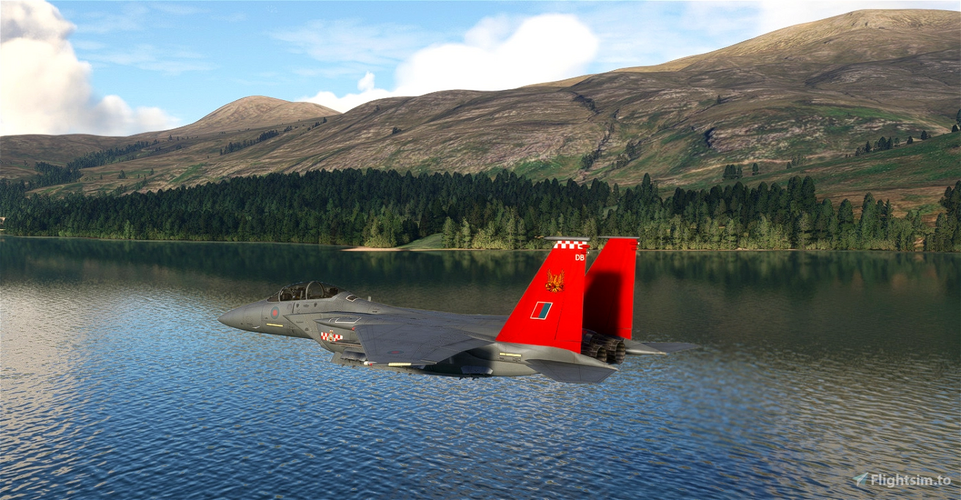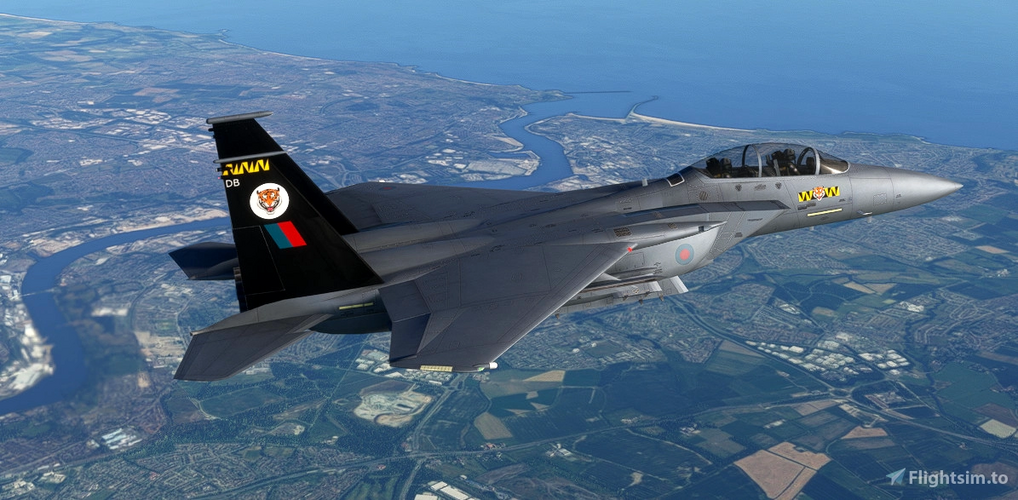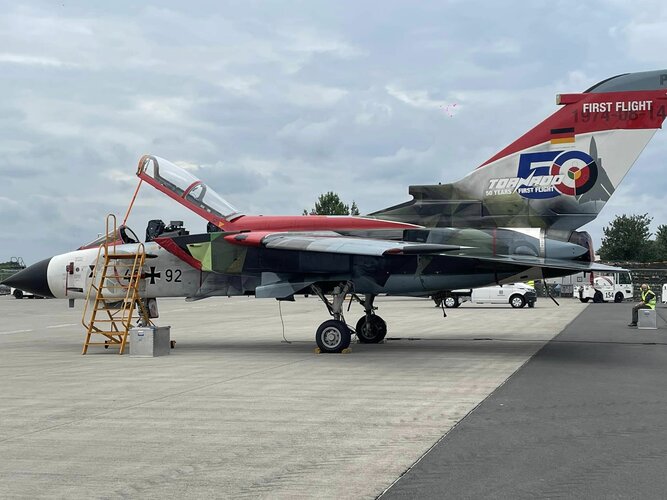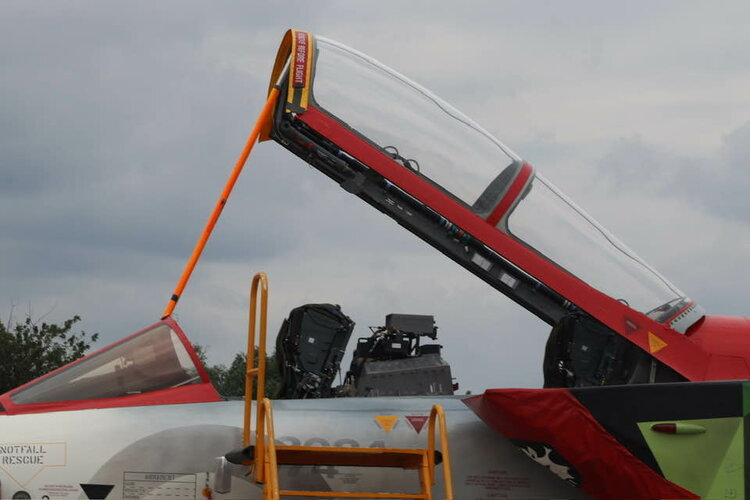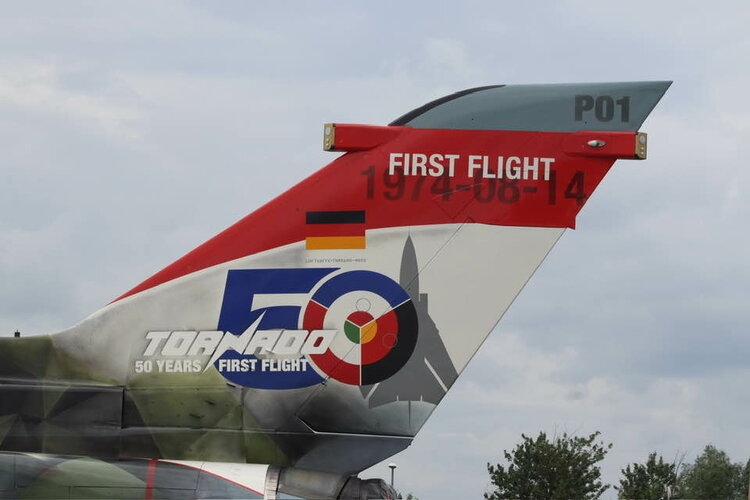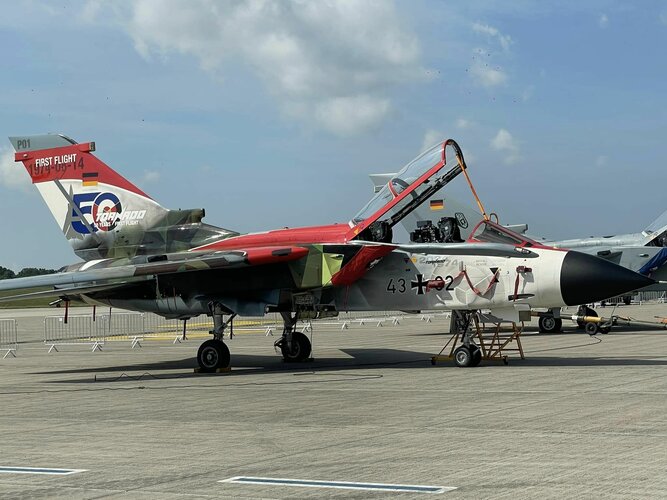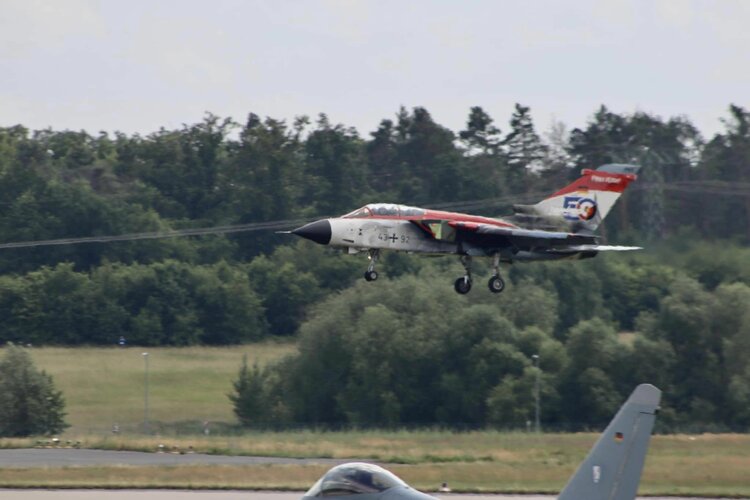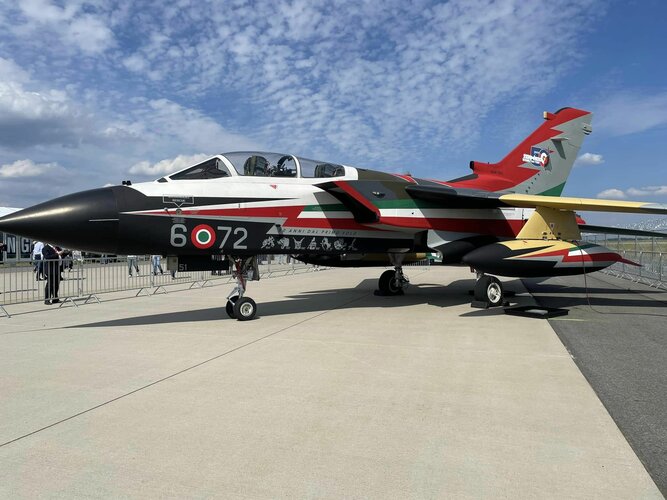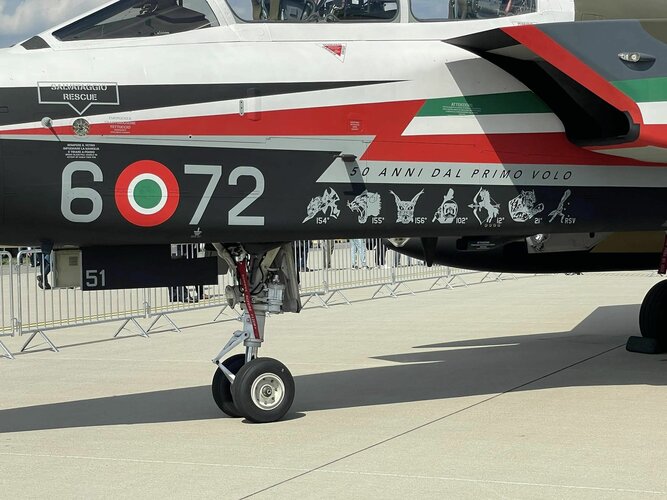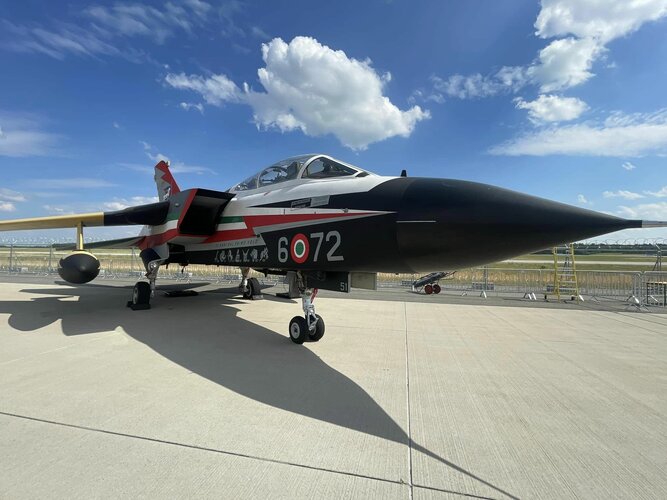- Joined
- 11 February 2007
- Messages
- 2,523
- Reaction score
- 4,270
As I found a reference in the Tornado US Wild Weasel thread I went and dug my copy of World Air Power Journal 30 (Autumn/Fall 1997) and its Tornado article by Jon Lake.
Interesting snippets, summarised rather than verbatim:
Timeline:
May 1965 UK and France agree to build AFVG and Jaguar.
June 1965 AFVG feasibility study issues requirements
Apr 1966 definitive AFVG requirements issued
AFVG is based on the BAC P.45 with French M45 engine and TSR2 avionics
1966 UK variant of AFVG loses fighter role as Phantom bought instead
June 1967 France pulls out of AFVG
UK recasts AFVG as UKVG with RB.153 in place of the M45
But a pure UK design is unacceptable to the government, so BAC courts MBB in June 1967, whose VTOL AVS is on the point of collapse and which has a Neue Kampflugzeug (NKF) design for a light single seat fighter-bomber
Germany demands design leadership, BAC is okay with this as it expects to drive the design from the back seat
Jan 1968 NATO F-104 operators Germany, Italy, Netherland and Belgium, with Canada as observer, start Multi-Role Aircraft for 1975 (MRA 75)
UKVG dies and spawns the light ACA and twin- BS-143 engined FCA, which BAC bids for MRA 75, leading to a July 1968 MoU.
Belgium and Canada drop out as they want an interceptor.
Dec 1968 BAC, MBB and Fiat set up what will become Panavia and produce formal requirements.
Compromise design evolves from British and German proposals, basically the British fuselage and wing with the German outboard wing pivots and wing glove, looking much like UKVG. Italian intake design is adopted.
Compromise design is accepted March 1969 and Panavia created, shares split 33% BAC, 33% MBB, 16% Fiat, 16% Fokker, becoming 42.5% BAC, 42.5% MBB, 15% Fiat when the Netherlands withdraw as they want an interceptor. MBB leads on Panavia 100 single seat interceptor, BAC on Panavia 200 twin seat interdictor. Luftwaffe and Italians want the 100, UK and the Marineflieger the 200.
March 1970 Luftwaffe gets cold feet over the superiority of Panavia 200's avionics over the 100 and jumps ship, Italians quickly follow, Panavia 100 axed.
Production authorised 1973.
12 Nov 1973, first protoype taken by road from Ottobrun to Manching for assembly, but engines not ready yet.
14 Aug 1974 first flight
Role: Italy and Germany apparently wanted to concentrate on CAS/BAI, but the UK was able to produce convincing data* that they could have greater effect by going after troop concentrations in the rear as an interdictor. Similarly, the UK had data to show it would be more effective as a night/all-weather aircraft,
* I'm guessing Operational Research analysis.
Range: Britain wanted increased range over the Germans for low level, but compromised to keep Germany and Italy happy and in the programme. And because of this it didn't initially tell them it was planning the stretched ADV. RAF Tornados have about 10% extra fuel over German and Italian via the fin tank.
ECM fit: RAF use Skyguardian RWR, BOZ 107 plus Sky Shadow. Germans use BOZ 101 plus Cerberus II/III/IV, AN/APQ-111 vs Cerberus reported, but possibly a mis-identification, Marineflieger may use Ajax vice Cerberus. Italians use BOZ 102 plus Cerberus or Elletronica EL/73, but normally seen with twin BOZ when operating over Bosnia, Italian ECRs have an Elletronica RWR. For MLUs, the RAF initially wanted Zeus, but it was cut, both the German and Italian MLUs were reportedly looking at improved EW/RWR fits, but the article is too early to cover final decisions.
(Edited to add AFVG dates)
Interesting snippets, summarised rather than verbatim:
Timeline:
May 1965 UK and France agree to build AFVG and Jaguar.
June 1965 AFVG feasibility study issues requirements
Apr 1966 definitive AFVG requirements issued
AFVG is based on the BAC P.45 with French M45 engine and TSR2 avionics
1966 UK variant of AFVG loses fighter role as Phantom bought instead
June 1967 France pulls out of AFVG
UK recasts AFVG as UKVG with RB.153 in place of the M45
But a pure UK design is unacceptable to the government, so BAC courts MBB in June 1967, whose VTOL AVS is on the point of collapse and which has a Neue Kampflugzeug (NKF) design for a light single seat fighter-bomber
Germany demands design leadership, BAC is okay with this as it expects to drive the design from the back seat
Jan 1968 NATO F-104 operators Germany, Italy, Netherland and Belgium, with Canada as observer, start Multi-Role Aircraft for 1975 (MRA 75)
UKVG dies and spawns the light ACA and twin- BS-143 engined FCA, which BAC bids for MRA 75, leading to a July 1968 MoU.
Belgium and Canada drop out as they want an interceptor.
Dec 1968 BAC, MBB and Fiat set up what will become Panavia and produce formal requirements.
Compromise design evolves from British and German proposals, basically the British fuselage and wing with the German outboard wing pivots and wing glove, looking much like UKVG. Italian intake design is adopted.
Compromise design is accepted March 1969 and Panavia created, shares split 33% BAC, 33% MBB, 16% Fiat, 16% Fokker, becoming 42.5% BAC, 42.5% MBB, 15% Fiat when the Netherlands withdraw as they want an interceptor. MBB leads on Panavia 100 single seat interceptor, BAC on Panavia 200 twin seat interdictor. Luftwaffe and Italians want the 100, UK and the Marineflieger the 200.
March 1970 Luftwaffe gets cold feet over the superiority of Panavia 200's avionics over the 100 and jumps ship, Italians quickly follow, Panavia 100 axed.
Production authorised 1973.
12 Nov 1973, first protoype taken by road from Ottobrun to Manching for assembly, but engines not ready yet.
14 Aug 1974 first flight
Role: Italy and Germany apparently wanted to concentrate on CAS/BAI, but the UK was able to produce convincing data* that they could have greater effect by going after troop concentrations in the rear as an interdictor. Similarly, the UK had data to show it would be more effective as a night/all-weather aircraft,
* I'm guessing Operational Research analysis.
Range: Britain wanted increased range over the Germans for low level, but compromised to keep Germany and Italy happy and in the programme. And because of this it didn't initially tell them it was planning the stretched ADV. RAF Tornados have about 10% extra fuel over German and Italian via the fin tank.
ECM fit: RAF use Skyguardian RWR, BOZ 107 plus Sky Shadow. Germans use BOZ 101 plus Cerberus II/III/IV, AN/APQ-111 vs Cerberus reported, but possibly a mis-identification, Marineflieger may use Ajax vice Cerberus. Italians use BOZ 102 plus Cerberus or Elletronica EL/73, but normally seen with twin BOZ when operating over Bosnia, Italian ECRs have an Elletronica RWR. For MLUs, the RAF initially wanted Zeus, but it was cut, both the German and Italian MLUs were reportedly looking at improved EW/RWR fits, but the article is too early to cover final decisions.
(Edited to add AFVG dates)
Last edited:

